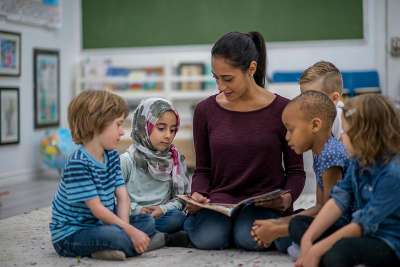Graphic Organizers
A graphic organizer is a pictorial representation of the relationships that exist between ideas. It shows how ideas are connected and how ideas are related to each other. It is the basis for all forms of comprehension. By definition, comprehension is an understanding of how ideas or concepts are assembled into groups.
For example, if I asked you to assemble a list of vegetables (vegetables is the group) you might list some of the following: broccoli, squash, beans, peas, corn, pumpkins, etc. Each of these items is a member of the vegetable group. Thus, you comprehend vegetables because you understand how all those individual vegetables are related to each other.
Graphic organizers assist students in categorizing information. Most important, they help students understand the connections between their background knowledge and the knowledge they're learning in class.
One widely used graphic organizer is semantic webbing. Semantic webbing is a visual display of students' words, ideas, and images in concert with textual words, ideas, and images. A semantic web helps students comprehend text by activating their background knowledge, organizing new concepts, and discovering the relationships between the two. A semantic web includes the following steps:
A word or phrase central to some material to be read is selected and written on the chalkboard.
Students are encouraged to think of as many words as they can that relate to the central word. These can be recorded on separate sheets of paper or on the chalkboard.
Students are asked to identify categories that encompass one or more of the recorded words.
Category titles are written on the board. Students then share words from their individual lists or the master list appropriate for each category. Words are written under each category title.
Students should be encouraged to discuss and defend their word placements. Predictions about story content can also be made.
After the material has been read, new words or categories can be added to the web. Other words or categories can be modified or changed, depending on the information gleaned from the story.
Problem-Solving Activities
In this situation, the class, small groups, or individuals are given a problem or series of problems and are directed to find an appropriate solution. It is important to include problems for which the teacher does not have a preordained answer. (See Problem-Solving for additional ideas.)
Buzz Sessions
In this instance, temporary groups are formed for the purpose of discussing a specific topic. The emphasis is on either the background knowledge students bring to a learning task or a summary discussion of important points in a lesson.















